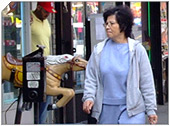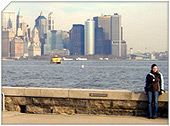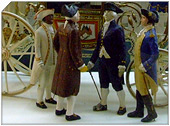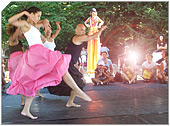Forest Hills, Queens, New York City
|
Getting Started
Index
NYC Neighborhoods
Manhattan
Brooklyn
Queens
Bronx
Staten Island
NYC Icons
Chrysler Building
Flatiron Building
Empire State Building
Safe NYC
NYPD
FDNY
NYC Weather
NYC Climate
NYC Weather Forecast
Winter Season
Spring Season
Summer Season
Fall Season
NYC History & Politics
New York City History
Tammany Hall and Politics
New York City Politicians
New York City Personalities
Culture of Gotham City
Culture of the city
Cultural diversity
City in popular culture
|
Forest Hills is a neighborhood in central part of the New York City borough of Queens. It is bordered to the north by Rego Park, to the east by Flushing Meadows Park, the Grand Central Parkway and Kew Gardens, to the west by Middle Village and to the south by Forest Park.
Neighborhood
The neighborhood is home to a mix of middle to upper-class residents, the latter of whom often live in the neighborhood's prestigious Forest Hills Gardens area. Forest Hills has historically had a very large Jewish population with more than 10 synagogues located in the area.
The community was founded in 1906, but before that it was known as White Pot. In 1909, Margaret Olivia Slocum Sage, who founded the Russell Sage Foundation, bought 142 acres (0.6 km˛) of land from the Cord Meyer Development Company. The original plan was to build good low-income housing and improve living conditions of the working poor. Grosvenor Atterbury, a renowned architect, was given the commission to design Forest Hills Gardens. The neighborhood was planned on the model of the garden communities of England. As a result, there are many Tudor-style homes in Forest Hills, most of which are now located in Forest Hills Gardens. However, there are currently a number of Tudor homes in particular areas of Forest Hills outside of the Gardens.
The neighborhood contains areas of private houses with little commerce, such as the Gardens area; dense commercial districts full of stores and large apartment complexes; and streets with the six-story brick apartment buildings common throughout Queens. The main thoroughfare is the 12-lane-wide Queens Boulevard, while Metropolitan Avenue is known for its antique shops. The commercial heart of Forest Hills is a mile-long stretch of Austin Street, which contains many restaurants, boutiques, and chain stores. Forest Hills is also home to a large working to middle-class community consisting mostly of Bukharian Jewish along with a variety of other Asian immigrants, residing mostly north of 65th Avenue around 108th Street. On 62nd Drive, the last block before 108th Street ventures north into Corona, Queens, is a NYCHA low-income housing project that caused controversy among the residents in the more prestigious areas in Forest Hills when first constructed.
Forest Hills was once the home of the U.S. Open tennis tournament, played at the West Side Tennis Club before it moved to the USTA National Tennis Center in Flushing Meadows Park. When the Open was played at the tennis stadium, the tournament was commonly referred to merely as Forest Hills just as The Championships, Wimbledon are referred to as Wimbledon.
Forest Hills is also home to the main offices of JetBlue Airways Corp., a US low-cost carrier.
Two monuments are erected in Forest Hills Gardens:
A tribute to the victims of World War I, the "Great War".
The mast of Columbia, the winner of the America's Cup in both 1899 and 1901.
|
New York City Search
Quick NYC
|
|
|
 How safe is New York City?
How safe is New York City? Contrary to popular belief, the City consistantly ranks in the top ten safest large cities in the United States. The NYPD is the largest municipal police force in the world and has it's own Movie/TV Unit. |

New York has a humid continental climate resulting from prevailing wind patterns that bring cool air from the interior of the North American continent. New York winters are typically cold with moderate snowfall.  New York Weather Forecast New York Weather Forecast |

New York's two key demographic features are its density and diversity. The New York City metropolitan area is home to the largest Jewish community outside Israel. It is also home to nearly a quarter of the nation's South Asians, and the largest African American community of any city in the country.  Ethnic composition Ethnic composition |

New York Newspapers
 
|



 New York Weather Forecast
New York Weather Forecast
 Ethnic composition
Ethnic composition


















